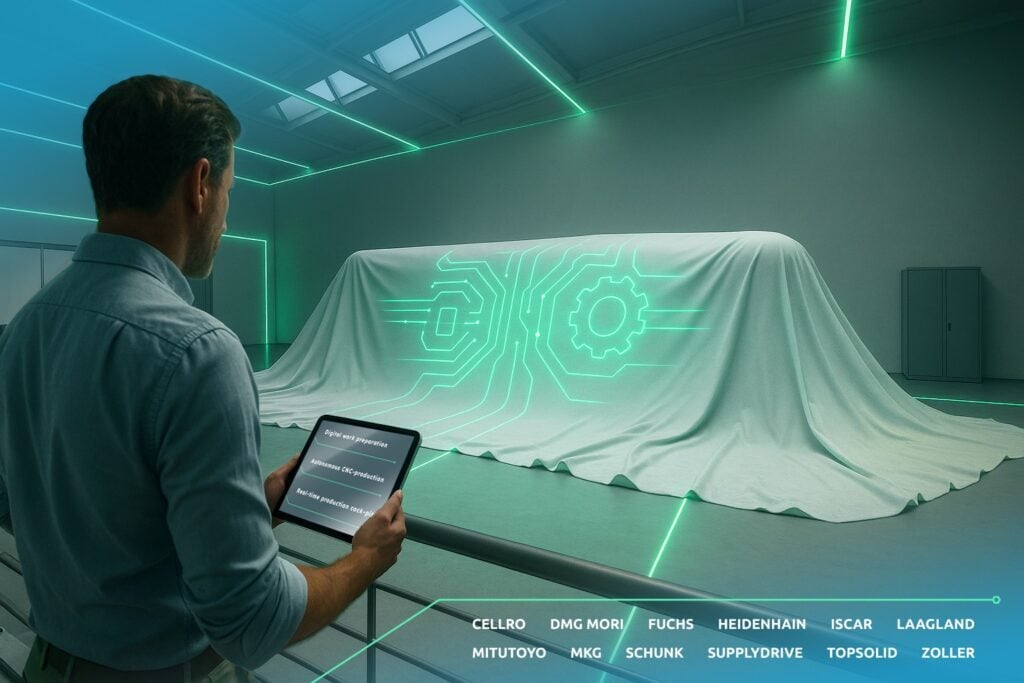How to get started with a hybrid ERP cloud
Published: November 16, 2021
Last update: August 20, 2025
6 questions about the use of a hybrid ERP cloud architecture
Economic reasons like time and costs plead for using ERP applications in the cloud. However, small and mid-sized enterprises are still hesitant since placing core systems in the hands of an IT partner is still a step that needs thorough consideration. A phased transformation presents a way out of this dilemma. The ERP provider proALPHA has compiled six strategic questions to help SMEs to approach the ERP cloud step by step.
ERP systems are always crucial to the business and thus not the first among the systems to be transferred to the cloud. Manufacturing SMEs are particularly reluctant where their core processes are concerned. However, if companies play for time, they might lose the productivity advantages offered by a cloud ERP. Since the average age of an ERP installation is more than 11 years and it's time that many SMEs replace their system, it might be a good idea for them to take a hybrid cloud architecture into consideration.
- What is the right cloud approach?
When your company decides to use ERP in the cloud, it's first all about finding the right cloud approach. Is your company currently restructuring or modernizing? Then you might want to consider a standardized Software as a Service (SaaS) solution. If you want to migrate an existing ERP system or parts of it to the cloud, hosting should be your model of choice. If you want to first test the live operation, you can also decide on temporary implementation hosting, which is an individually replicated on-premises system.
- Do I have to operate my whole ERP system in the cloud?
Not everything that can be in the cloud must be in the cloud! A hybrid architecture offers the possibility to operate applications partially on-premises and partially in the cloud. This combination of both worlds currently provides the greatest added value for manufacturing SMEs. The rule of thumb here is: The closer an application is to the core processes of a company, the more sensitive is its operation in the cloud. This also means that the further away an application is from the core processes, the more sense it makes to migrate it to the cloud, like eProcurement solutions.
- How can you ensure a seamless data exchange from and to the cloud?
Especially in production, the ERP system is often used along with other technical applications that cannot just be transferred to the cloud, for example, for production control or the design of technical solutions. These can still be used on-premises. They can be easily connected to a cloud ERP system by means of a standardized integration platform like the Integration Workbench (INWB). It only requires a uniquely addressable interface in the target system. The data are transferred via a high-security VPN connection.
- At what point does it make sense to outsource other applications as well?
Many downstream applications are perfect for the use in the cloud, especially when they support the mobile or multi-site working methods of employees. It might make sense to host Office applications in connection with the ERP system, for example. Other applications like VOIP telephony, EDI, Exchange, a web shop or B2B applications can also be operated in the cloud. The cloud ERP system remains at the center of the operational IT infrastructure, acting as data hub.
- What base architecture should be used for the hosting?
To ensure a high level of acceptance among the employees, the front end of a hosted ERP cloud solution should be easy and intuitive to operate. If no new ERP system is to be implemented, it makes sense to adopt the established and familiar graphical user interface of the previous on-premises system as a whole. The front end must meet all requirements of a secure, mobile, flexible and virtual workstation. This includes the access from anywhere at any time and with any device, a high performance and a fast user login.
- What about the data security and compliance of the providers?
A cloud environment offers many companies generally higher security standards than the ERP operation in their own data center. The operation of a second data center in the cloud as a precaution, and certificates like ISO 27001 for information security management indicate that a provider handles these real data carefully. In order to comply with the strict German privacy regulations, there's no getting around locating the cloud data centers in Germany.
"A hybrid strategy currently offers SMEs the greatest benefit," says Michael Bzdega, Business Cloud Solution Architect at proALPHA. "More and more ERP providers combine the two approaches Best of Breed and Best of Suite. For instance, proALPHA is developing an innovation platform that comprises solutions for financial performance management and the cross-system data quality. A future development of the ERP application into a micro-service architecture would facilitate the integration of the customer's third-party applications into applications of this innovation platform. In this scenario, companies use the benefits of the cloud for various application areas but also stay on-premises where it makes sense."


